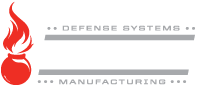SAFETY
WARNING:
BEFORE HANDLING YOUR FIREARM, READ THE FOLLOWING SAFETY RULES AND THE OPERATOR’S MANUAL.
U.S. Ordnance promotes nothing less than maximal safety when operating weapons.
As an owner, you must learn how to use firearms safely. If you handle them improperly, you can seriously injure people and damage property.
Read and follow these instructions:
- Never point a firearm at anyone. Always keep the muzzle pointed in a safe direction.
- Always treat all firearms as if they are loaded. Do not rely on your gun’s “safety.”
- When firearms are not in use, keep them unloaded and stored in a safe and secure location.
- Keep firearms and ammunition away from children. Securely store unloaded firearms and ammunition in separate locations.
- Never give any firearm to someone, or take one from them, unless the weapon’s action is open.
- Do not alter or modify your gun. Do not change or alter any parts of your firearm. Use only genuine parts. Never adjust the trigger or change the shape or size of the sear, sear notch, sear spring or any other internal parts.
- Neither take a loaded firearm into a building or vehicle nor store one there.
- Unload your firearm before crossing or climbing up or down any obstacle that may prevent you from maintaining full control over your firearm, such as a fallen tree, fence, tree stand or slippery area.
- Before firing any firearm unfamiliar to you, understand how it functions. Learn its mechanical and handling characteristics.
- Never handle any firearm when you are impaired by alcohol, any kind of drug, illness or fatigue.
- Never shoot at water, rocks or any hard surface. Bullets, slugs or shots can ricochet off such surfaces and cause injuries. Remember that shotgun pellets can travel 500 yards, and shotgun slugs have a range of more than 0.5 mile. Centerfire bullets can travel up to 5 miles.
- Never load your firearm until you are in a location where it is safe to shoot. Always keep the safety engaged until you are ready to shoot. As soon as you cease firing, even temporarily, immediately engage the safety.
- Keep your finger off the trigger while loading and unloading your firearm.
- Use the correct ammunition. Only use ammunition that exactly matches the caliber or gauge markings on your firearm. Ensure that the ammunition you use is factory loaded and not damaged in any way. Improper hand loads can cause the barrel of a firearm to burst, which can result in serious personal injury or death.
- Before shooting, ensure the firearm is completely unloaded and on SAFE, and its bolt is locked to the rear. Check to make sure the barrel is unobstructed.
- When shooting, always wear ear and eye protection (shatterproof or shooting eyeglasses). Repeat exposure to shooting noise can damage your hearing permanently.
- Keep your finger off the trigger until your sights are on the target.
- Be sure of not only your target but also what is beyond it. Before you pull the trigger, make sure you can see the target clearly as well as the path of the bullet, slug or shot charge beyond the target.
- If your gun fails to fire, keep it pointed in a safe direction, then carefully unload it. If it fires but the report or recoil seems weak, unload it and ensure the barrel is clear.
- Clean and maintain the firearm according to the manual’s instructions. Have the firearm checked periodically by a qualified gunsmith to ensure it still is in good mechanical condition. Worn, damaged or missing parts can be dangerous.
- Be aware that discharging firearms in poorly ventilated areas, cleaning weapons and handling ammunition can expose you to lead, a substance known to cause reproductive harm, birth defects, cancer and other serious problems. When taking these actions, ensure that you always have adequate ventilation. Wash your hands after handling and firing ammunition.
